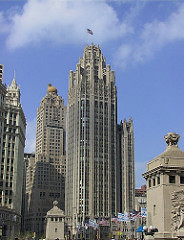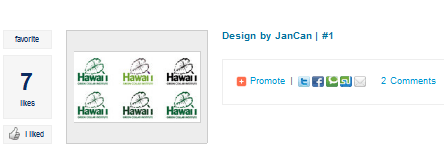Banner advertising has a dual purpose: getting your brand out there, and boosting ROI. The main reason many advertising campaigns fail is related to design – poor design that is. DIY strategies for economy work only for those who are already designers, especially if they are experienced enough to make a market audit, to understand what their targeted audiences like to see, and what they react to.
 Obama “Hope” 2008 – advertisement by Mathieu L. Fiset
Obama “Hope” 2008 – advertisement by Mathieu L. FisetThere is a very important aspect that cannot be overlooked – banner advertising, when done right, targets the short term revenue and the long term brand placement. Consumers might not have an immediate need to purchase a product, but they might remember a brand because of an impactful advertisement. Images and symbols are sticky – and a web user may remember the name of a company months after being exposed to a banner.
The best way to get a quality banner is to ask a number of designers to submit ideas, proposals and sketches. Then, ideally, these sketches should be scrutinized by a group of relevant people for feedback on what they like, why they like it, whether they will remember the ad, and so on. For small businesses, this is challenging and costly. A cost effective alternative, although somewhat controversial, is crowdsourcing.
Many accomplished designers, who already made their mark, and are well known, brand crowdsourcing and “design contests” in general as exploitative, and ’spec’, or speculative work. Many of them see this practice as a “cesspool of copyright infringement” and “harmful for the design profession.” This is for obvious reasons.
 The Chicago Tribune Building – photo on Flickr by alui0000
The Chicago Tribune Building – photo on Flickr by alui0000But, crowdsourcing is not a new trend – many businesses have been using the practice outside the web for years. In 1922 Robert McCormick organized a design competition to get designs for the tower that currently houses The Chicago Tribune. The competition offered $100,000 in prize money, with a $50,000 1st prize for “the most beautiful and distinctive office building in the world.” The competition attracted 263 entries, and it was won by John Mead Howells and Raymond Hood. Their building still stands, a solid proof that design contests are probably the best way to get a good design.
The advocates of crowdsourcing usually think that the critics of the practice fear competition. Whether this is the case or not, is anyone’s guess. But, the lesson learned from the Tribune contest in 1922 bears witness to a valid strategy. Sure, online design contests attract a number of inexperienced participants, many of which are not even designers. Sure, it is very likely that some of them are cheating by submitting copied work, and this is a serious risk for the entrepreneurs who organize the contests, if they select the infringing work as a contest winner. But, such instances are fortunately very rare, and now, there is at least one website that found a way to ensure that designs get enough community feedback to avoid negative scenarios.
Prova.fm is an ad agency and a crowdsourcing platform that takes a social approach to business, integrating social networking features like Facebook, Twitter and Buzz, to allow designers participating in a contest to promote their contest entries within their networks of friends, get feedback from their peers and so on.
 Currently ongoing, a logo contest for Hawaii Green Collar Institute.
Currently ongoing, a logo contest for Hawaii Green Collar Institute.Entrepreneurs who use Prova to get a design can use the same tools to ask for feedback from their own online friends and customers. In addition, each design entry has an associated “I like” button, that allows visitors to vote for the designs they like best. This voting system allows contest organizers to track audience preference. However, the winner of the contest can be selected independent from these “likes” – the organizer alone is the one who decides the winner.
In the end, the designs created through Prova are designs with the proper headlines, unique angle, and call to action that attract the best market for a given business.
There are many value points for designers as well, as Prova wants to be the ideal launching pad for emerging designers. All winners get to be promoted on Prova’s sites and partner sites as well, on social networks like Facebook and Twitter, and even in printed newspapers and magazines.
There are other crowdsourcing sites as well, some older in the business than Prova, like 99designs.com and CrowdSpring. But Prova is the only one with such a community aspect, and the tools to make a difference and to bring something positive to the market, by helping emerging designers to get early career exposure, in addition to cash prizes. An insider tip: Prova will organize a number of contests in the following months, to involve its own community to create the company’s logo, landing page, banners and many other designs.
Not every company has the where-with-all to hire the most famous design team in the world. And, the most talented designers are not always the most famous ones. Brand advertising is one of the most crucial aspects of any business. But for advertising and marketing to be great, the cost does not always have to be. Crowdsourcing can have a huge impact on any campaign aspect, and with services like Prova, 99designs and CrowdSpring the crowd supplies so many benefits.
Disclaimer: Prova.fm is a Pamil Visions PR customer. The opinions expressed here are the author’s alone. SEJ is not affiliated with Prova or Pamil Visions in any way.





